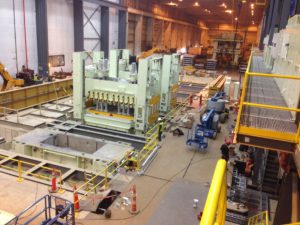This is part 2 of a 5-part series.
Last week’s blog covered the first step to a successful equipment relocation: Planning. This week, we are focusing on the second step for a successful equipment move: Dismantling.
Dismantling
While it might be more cost-effective to ship equipment in one piece, there are typically some physical restrictions that don’t allow for this to be a viable option. These restrictions can include the weight capacity of the facility floors and loading area. When determining the weight capacity of the floor and loading area, the weight of the portable lifting equipment and the components combined needs to be taken into consideration. The combinations of the equipment and the components can cause a lot of stress on facility floors.
Some other physical restrictions include the equipment’s center of gravity and lifting points. A miscalculation of the tipping point of a machine or hookups can damage the equipment and create a very unsafe situation. To ensure safest relocation process, it is imperative that these restrictions are known before the project begins.
Dismantling the equipment needs to be done prior to relocation. Dismantling involves everything from removing and unhooking power and air connections, to loosening all the components the riggers will be moving. If the dismantling isn’t done before the riggers show up, this can lead to project delays. Lee Contracting handles every stage of the equipment relocation with our in-house crews who work together to get the job done. This ensures we aren’t waiting for another contractor to finish the dismantling before we can come in and relocate the equipment.
Dismantling a piece of equipment is a very important part of a successful equipment relocation. With over 25 years’ experience in equipment relocation, Lee Contracting has the in-house departments to execute the full relocation process. Call us today for an RFQ at 888.833.8776 or request one here.


